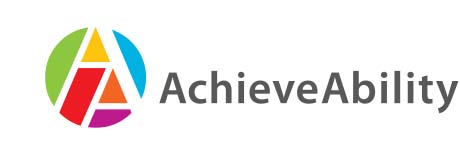Doctorate research The value of dyslexic culture
I wanted to inform you personally that the latest edition of the Journal of Inclusive Practice in Further and Higher Education is now published on the NADP website under our resources section. It has also been submitted to the British Library.
Thank you very much for submitting your article. We appreciate you sharing your research and ideas with us.
Best wishes Operations Manager, National Association of Disability Practitioners Ltd
The value of Dyslexic Culture within our society
JIPFHE.ISSUE-8-Spring-2017 [pdf]
Katherine Hewlett MA RCA
AchieveAbility
Abstract
This paper will give an overview of recent PhD level research which revealed a ‘Dyslexic Culture’ within the visual arts. The initial research set out to investigate the thinking approaches of dyslexic visual artists in their creative production, thus the research investigated dyslexic culture and the arts. The purpose was to find out if there are any thinking differences between dyslexic and non-dyslexic artists; to further discuss if dyslexic visual thinking is of value to modern mainstream society. The fieldwork included a purposive sampling of 44 artists with the data collected and interpreted through mixed methods using a range of tools. The research was positioned within cognitive and social constructivist perspectives, recognising that independent thinking is an integrated cognitive process of conceptualising inner, outer environments and of complex social interactions. Thus the research methodology was both ethnographic and phenomenological.
Dyslexic visual thinking within a socio-cultural context was explored to give context to the concept of creativity, visual language and the value of arts education as a process of thinking and conceptual development. The research focus emerged during the first stage of the fieldwork, namely to consider if visual creative practice is produced through the skill of thinking within a multi-dimensional context, thus to further consider how dyslexic thinking might be of benefit to mainstream systems: education and the workplace.
The research revealed that there is a ‘Dyslexic Cognitive Culture’ positioned within the dynamic of the ‘outsider’. Triangulation of methods was used within the data collection and the analysis. The key finding is the dyslexic ability to think as flowed movement within a multi- dimensional conceptual framework. It was found that this ability is so inherent that the dyslexic artists did not question or consider this ability to be different or of any greater value. The research drew conclusions on this finding by emphasising and further discussing the value of this thinking to a technological and an increasingly entrepreneurial society where divergent thinking contributes to creative production. The research positioned visual dyslexic thinking within a positive paradigm and questioned the dynamics of mainstream systems that should recognise more the value of these differences within a ‘Dyslexic Culture and the Arts’.
Introduction
Thank you very much for submitting your article. We appreciate you sharing your research and ideas with us.
Best wishes Operations Manager, National Association of Disability Practitioners Ltd
The value of Dyslexic Culture within our society
JIPFHE.ISSUE-8-Spring-2017 [pdf]
Katherine Hewlett MA RCA
AchieveAbility
Abstract
This paper will give an overview of recent PhD level research which revealed a ‘Dyslexic Culture’ within the visual arts. The initial research set out to investigate the thinking approaches of dyslexic visual artists in their creative production, thus the research investigated dyslexic culture and the arts. The purpose was to find out if there are any thinking differences between dyslexic and non-dyslexic artists; to further discuss if dyslexic visual thinking is of value to modern mainstream society. The fieldwork included a purposive sampling of 44 artists with the data collected and interpreted through mixed methods using a range of tools. The research was positioned within cognitive and social constructivist perspectives, recognising that independent thinking is an integrated cognitive process of conceptualising inner, outer environments and of complex social interactions. Thus the research methodology was both ethnographic and phenomenological.
Dyslexic visual thinking within a socio-cultural context was explored to give context to the concept of creativity, visual language and the value of arts education as a process of thinking and conceptual development. The research focus emerged during the first stage of the fieldwork, namely to consider if visual creative practice is produced through the skill of thinking within a multi-dimensional context, thus to further consider how dyslexic thinking might be of benefit to mainstream systems: education and the workplace.
The research revealed that there is a ‘Dyslexic Cognitive Culture’ positioned within the dynamic of the ‘outsider’. Triangulation of methods was used within the data collection and the analysis. The key finding is the dyslexic ability to think as flowed movement within a multi- dimensional conceptual framework. It was found that this ability is so inherent that the dyslexic artists did not question or consider this ability to be different or of any greater value. The research drew conclusions on this finding by emphasising and further discussing the value of this thinking to a technological and an increasingly entrepreneurial society where divergent thinking contributes to creative production. The research positioned visual dyslexic thinking within a positive paradigm and questioned the dynamics of mainstream systems that should recognise more the value of these differences within a ‘Dyslexic Culture and the Arts’.
Introduction
